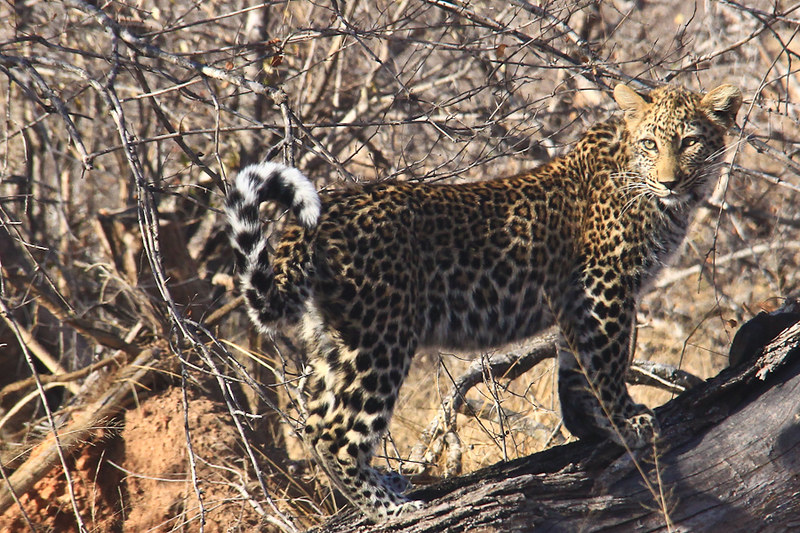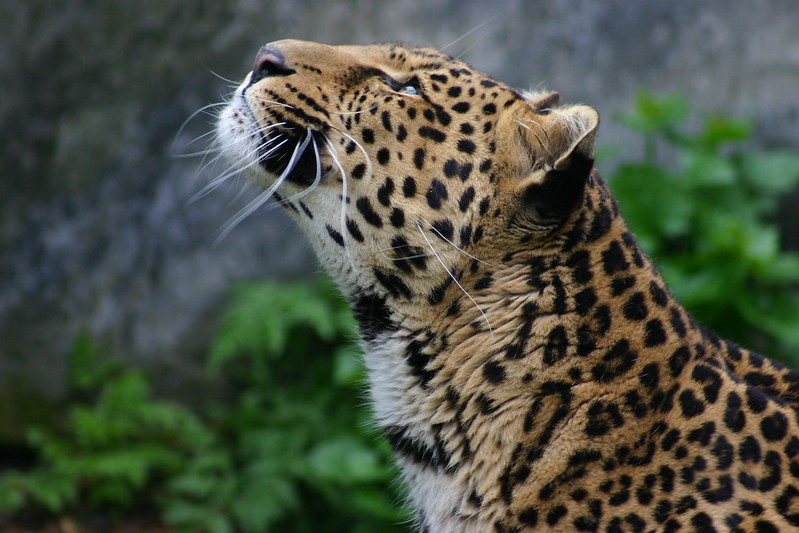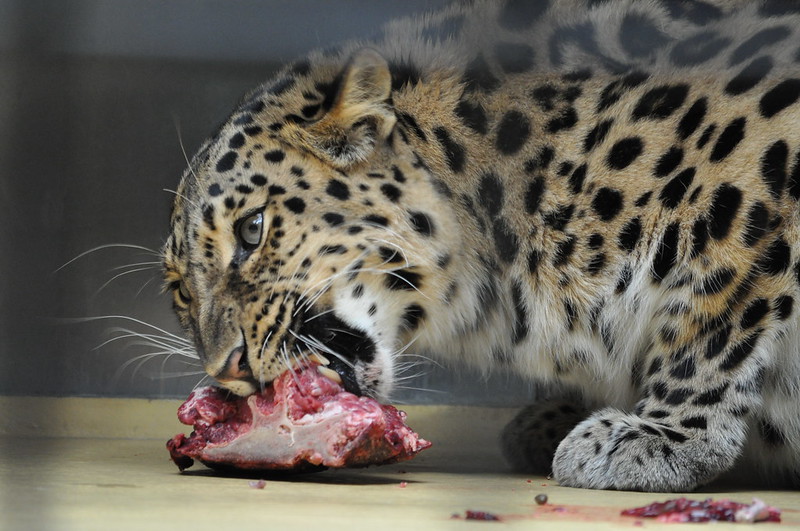Leopard (Panthera pardus)
Leopard: The Elusive Shadow of the Wild
Of all the members of Africa’s Big Five, the leopard is the most enigmatic—silent, unseen, and breathtakingly beautiful. Its golden coat flecked with dark rosettes blends perfectly into the undergrowth, allowing it to move like a whisper through the savanna or forest. Unlike the social lion or the thunderous buffalo, the leopard prefers solitude, choosing the cover of night to hunt and rarely revealing itself to the human eye. It is a master of stealth, able to haul prey twice its size into trees, where it feeds far from scavengers. This elusive nature is why spotting a leopard on safari feels like a rare gift from the wild.
Yet, behind this mystery lies a growing danger. Leopards are losing ground to expanding human settlements, road networks, and farming. As forests are cleared and wild prey becomes scarce, they are often forced into conflict with people, especially when they prey on livestock. Poaching also casts a long shadow, driven by the demand for their exquisite pelts and traditional medicine. Despite being the most adaptable of the big cats, the leopard’s silence is not safety—it is survival in a world that is closing in.
Unveiling the Mystery, Beauty, and Survival of One of Nature’s Most Elusive Predators: Leopards In Africa
Where to Find Leopards on Safari
When it comes to safari destinations, the leopard’s elusive nature means that sightings can be rare, but they are found in a number of iconic wildlife parks. The Serengeti National Park in Tanzania is a top destination for leopard sightings, especially in the trees where they often haul their prey to avoid scavengers. The Masai Mara in Kenya is another hotspot where leopards are known to thrive, with the best chances of seeing them in the early morning or at dusk. Kruger National Park in South Africa offers a diverse range of habitats, making it an ideal place to spot these solitary cats, especially in areas with dense vegetation. In Botswana, the Okavango Delta and Chobe National Park are perfect for spotting leopards in the wild, particularly around the riverbanks and dense areas. With a combination of patience, quiet observation, and expert guides, spotting a leopard in these regions can be one of the most rewarding experiences.
Best Time to See Leopards
Leopards are primarily nocturnal, so the best time to spot them on a safari is either early in the morning or late in the evening when they are most active. The dry season, from June to October, is particularly favorable for leopard sightings as animals gather around waterholes, making it easier to track their movements. However, spotting a leopard during the day is a rare and special treat, as they often rest in the shade to avoid the heat.
The Leopard’s Role in the Ecosystem
Leopards are not just beautiful creatures; they are essential for the balance of their ecosystem. As top predators, they help control populations of herbivores, maintaining a healthy balance in the food chain. Their presence in a habitat is indicative of a well-balanced ecosystem. Leopards are opportunistic hunters, preying on a wide variety of animals, from small rodents and birds to larger antelope. Their stealth and agility make them exceptional hunters, capable of bringing down prey much larger than themselves. By keeping populations of prey animals in check, leopards help to prevent overgrazing and maintain the health of the vegetation.
Leopard Behavior: The Secretive Hunter
Leopards are solitary animals, unlike lions that live in prides. Their elusive nature means that they are often difficult to spot, but when you do catch a glimpse of them, their grace and beauty are unparalleled. They are territorial creatures, marking their boundaries with scent, scratch marks on trees, and other subtle signs. Leopards are also known for their intelligence and problem-solving abilities, often using the landscape to their advantage. They can hide their kills in trees, keeping their food safe from scavengers such as hyenas and lions, which is one of the most impressive survival tactics in the animal kingdom.
How to Spot Leopards on Safari: Tips and Tricks
While leopards are tricky to spot, knowing where and when to look can increase your chances of seeing one. Leopards tend to hide in thick vegetation, so it’s important to be patient and look closely at the surroundings. They often rest in trees, and their golden coats blend in perfectly with the environment. Early mornings and late evenings are the best times to spot them, as they tend to be more active during these times. Having a skilled guide who knows the leopards’ behavior and habitat can also be crucial, as they can help track the movements of these elusive big cats.
Fun Facts About Leopards
Leopards are often overshadowed by other big cats like lions and tigers, but they are known for their incredible stealth and adaptability. They are the ultimate survivors, capable of living in a variety of habitats. A few fun facts about leopards include:
Climbing prowess: Leopards are one of the few big cats that regularly climb trees, using their incredible strength and agility to haul their kills to higher ground.
Diverse prey: Leopards have a varied diet, preying on anything from small rodents to large ungulates, showcasing their versatility as hunters.
Adaptability: Leopards can live in a range of environments, from rainforests to savannas, and are capable of adapting to different climates and prey availability.
Why the Leopard is a Must-See on Your Safari
A leopard sighting is often the highlight of any safari, and it’s no wonder why. Their elusive nature and powerful presence create an aura of mystery, making every sighting a rewarding experience. Whether it’s watching them hunt or simply observing their graceful movements as they stalk through the brush, leopards are a true testament to the wonders of nature. They are one of Africa’s most elusive creatures, and spotting one is a moment you’ll never forget during your safari adventure.





